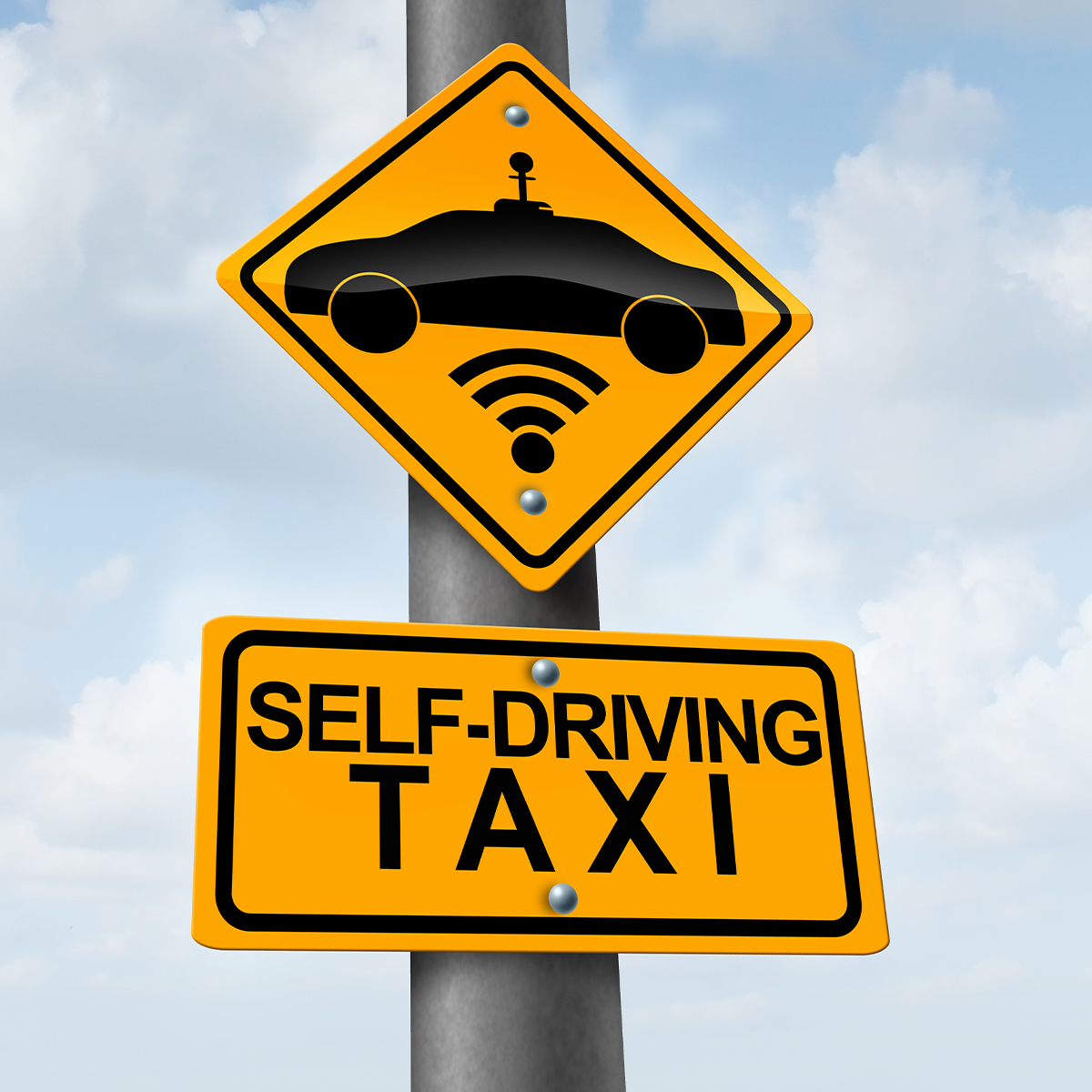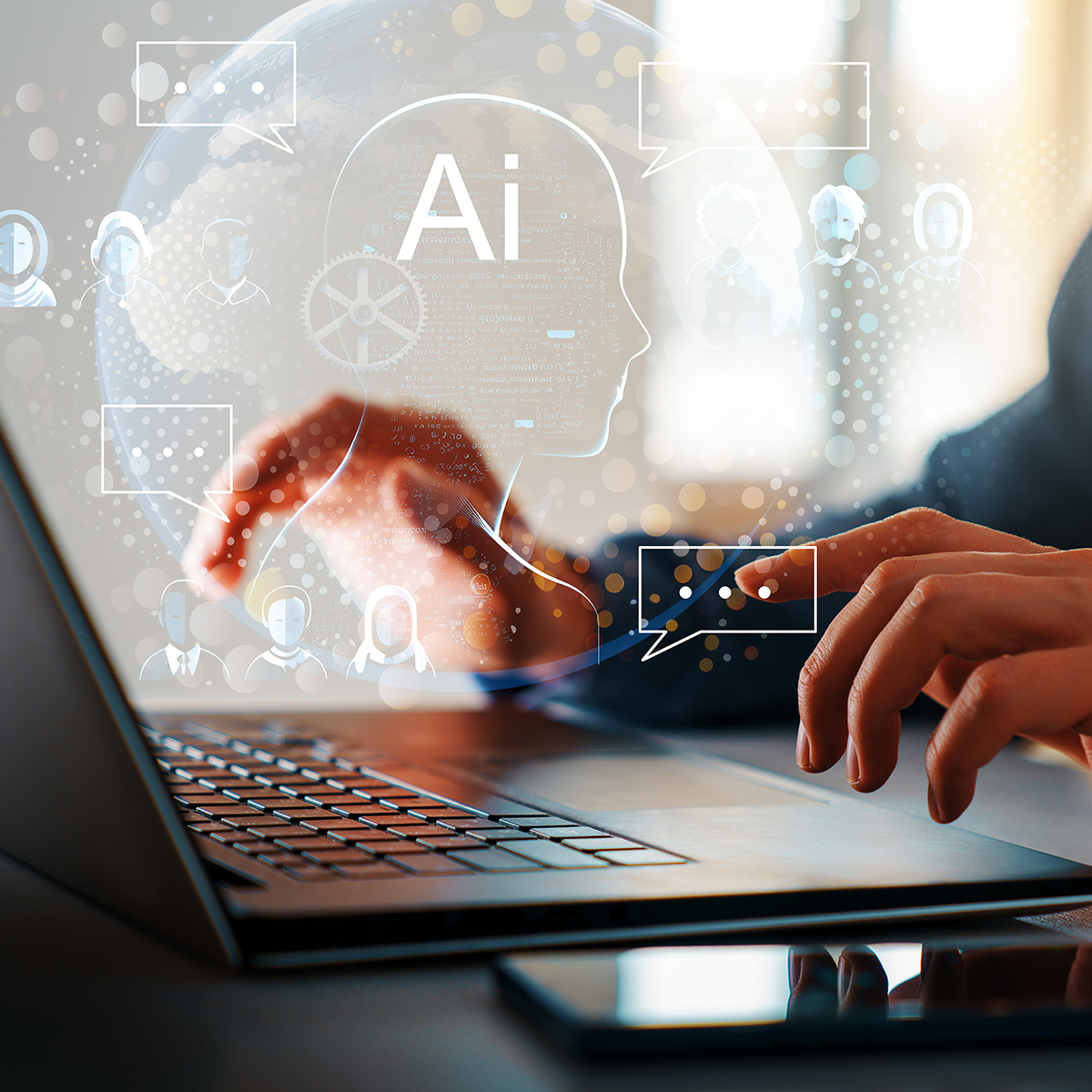-
Property & Casualty
Property & Casualty Overview

Property & Casualty
We offer a full range of reinsurance products and the expertise of our talented reinsurance team.
Expertise
Publication
Structured Settlements – What They Are and Why They Matter
Publication
PFAS Awareness and Concern Continues to Grow. Will the Litigation it Generates Do Likewise?
Publication
“Weather” or Not to Use a Forensic Meteorologist in the Claims Process – It’s Not as Expensive as You Think
Publication
Phthalates – Why Now and Should We Be Worried?
Publication
The Hidden Costs of Convenience – The Impact of Food Delivery Apps on Auto Accidents
Publication
That’s a Robotaxi in Your Rear-View Mirror – What Does This Mean for Insurers? -
Life & Health
Life & Health Overview

Life & Health
We offer a full range of reinsurance products and the expertise of our talented reinsurance team.

Publication
Key Takeaways From Our U.S. Claims Fraud Survey
Publication
Favorite Findings – Behavioral Economics and Insurance
Publication
Individual Life Accelerated Underwriting – Highlights of 2024 U.S. Survey
Publication
Can a Low-Price Strategy be Successful in Today’s Competitive Medicare Supplement Market? U.S. Industry Events
U.S. Industry Events
Publication
The Latest in Obstructive Sleep Apnea -
Knowledge Center
Knowledge Center Overview

Knowledge Center
Our global experts share their insights on insurance industry topics.
Trending Topics -
About Us
About Us OverviewCorporate Information

Meet Gen Re
Gen Re delivers reinsurance solutions to the Life & Health and Property & Casualty insurance industries.
- Careers Careers
Generative Artificial Intelligence in Insurance – Four Aspects of the Current Debate

January 31, 2024
Frank Schmid
English
Deutsch
Generative artificial intelligence (AI) is widely viewed as a general-purpose technology (GPT). The arrival of a GPT is a rare event, even in modern times. Aside from generality of purpose, a defining quality of a GPT is the emergence of a feedback loop between downstream innovation and continued improvement of the technology.1 The adoption of a GPT is gradual, and its productivity benefits take time to materialize as the technology complements innovation in production processes, organizational design, and products.
There are two productivity booms the United States experienced since the beginning of the 20th century that have been attributed to the arrival of a GPT. The episode of strong U.S. labor productivity growth between 1917 and 1932 has been linked to the invention of the electric motor (circa 1890). Similarly, significant U.S. labor productivity gains during the period 1995‑2015 have been associated with the advent of the personal computer (1981).2 Generative AI is being adopted faster than electricity or personal computing, and its productivity-enhancing effects may be felt with a shorter time lag.3
The advent of generative AI has given rise to much discourse, some of which relates to technical properties of large language models (LLMs), the deep learning engine that powers this technology. These technical aspects concern the probabilistic nature of generated content (which stands in the way of replicability), the approximate nature of generated content,4 and the possibility of hallucinations (content generated from false associations). There also is attention to legal aspects (copyright infringement) and ethical considerations (some of which are related to representation of society in the corpus the LLM is trained on, especially with respect to sensitive attributes, such as ethnicity and gender).
What are potential implications of the arrival of generative AI for the insurance industry? There are four aspects related to the outcome for the consumer, the worker, the insurer, and the insurance market.
The Consumer
Deep learning generates information by uncovering heterogeneity among consumers that has heretofore been obscured within the data available to the insurer. This information offers the potential for more differentiated structuring and pricing of insurance contracts. Greater differentiation by consumer preferences and risk profiles is a way of mitigating adverse selection, thus having the potential to broaden access to insurance.5
Then again, greater heterogeneity in insurance structuring and pricing may reduce risk-sharing among consumers.6 It has been proposed that risk factors that are unrelated to consumer behavior should be subject to the principle of solidarity.7 Ultimately, it is a societal decision which risk factors shall be permitted to be differentiated in pricing and structuring, and which risk factors shall be pooled.
The Deep Learning Revolution
The deep learning revolution erupted in 2012 when a neural network dubbed AlexNet won the ImageNet challenge, outperforming its competitors by a wide margin. Running from 2010 through 2017, the ImageNet Large Scale Visual Recognition Challenge (ILSVRC) was an annual contest where research teams around the world had their models compete in classifying a vast body of images. Prior to the arrival of deep learning, for a neural network to perform a classification task, the algorithm had to be instructed what to pay attention to, a process known as feature engineering. The handcrafting of features required expert knowledge of the applicable domain. For instance, in training a neural network to recognize a cat in an image (that is labeled as a depiction of a cat), the algorithm had to be instructed to pay attention to a pair of triangular shapes (indicative of cat ears), an inverted triangular shape underneath (indicative of a cat face), etc. Deep learning changed this by integrating feature learning and classification. In other words, deep learning not only relates patterns in data to outcomes, but it also learns of the presence of patterns. For instance, a deep learning algorithm will learn on its own the defining features of a cat from labeled cat images. AlexNet was the only model in the 2012 ImageNet challenge to run on NVIDIA chips and its programmable CUDA software layer. Specialized graphics processing units (GPUs) have since become the workhorse for generative AI.8
The Worker
The arrival of a GPT leads to an increase in workplace automation, which has two effects on labor. First, automation substitutes labor, a process historically confined to tasks that can be fully formalized and codified. An example is office computing, which performs tasks by following a set of pre-specified rules, a limitation that does not apply to generative AI.9 Second, automation complements labor by augmenting human skills that involve problem-solving, adaptability, and creativity.10 In decision-making, office computing complements labor by making information available, but it is left to humans to find associations, draw inferences, and exercise discretion.
Generative AI has the potential to substitute labor in tasks related to decision preparation and to complement labor in the task of decision-making. LLMs can be employed to prepare the body of knowledge relevant to a decision, be it related to an underwriting submission, a claim, or an insurance contract, and then to engage the decision-maker in a conversation with this corpus.11 Generative AI can make associations and draw inferences, which enables these systems to deliver draft decisions in situations that generalize beyond the data they have been trained on.12
Over the past two centuries, as automation has increasingly substituted labor in routine tasks, humans have allocated an increasing share of their working time to decision-making. The result is greater scarcity of labor at high skill levels, the skills for which are acquired through academic education, professional training, and industry experience. It has been posited that generative AI may reduce this scarcity by moving decision making to less highly skilled labor, reallocating talent to decision-making from decision support.13 This way, generative AI has the potential to lessen the shortage of high-skilled talent.
The Insurer
At the level of the insurance company, the arrival of a GPT initiates a process of discovery for productive use. The ability of generative AI to perform tasks heretofore the domain of human intelligence suggests opportunities for task-level substitution. Although generative AI can deliver productivity benefits at the task level, the value of a GPT derives primarily from system-level substitution. A defining characteristic of a GPT is that it complements innovation while increasing the financial return on developing new production processes, organizational structures, and products. This process of co‑invention creates a feedback loop between the downstream application of the GPT and the technology itself. The feedback loop unfolds over an extended period, as demonstrated by the adoption of electricity, and more recently office computing.14
The arrival of a GPT has the potential to increase firm heterogeneity. There is little predictability of how a new GPT gets adopted, and firms may differ in their paths to discovery. Also, the costs and benefits of co‑invention may vary across firms in the industry owing to differences in organizational structure.15 An empirical study on the adoption of Human Capital Management (HCM) software by corporations demonstrates the role of complementarities and the importance of co‑invention.16 Analyzing firm-level data on the implementation of HCM, incentive systems, and practices related to Human Resources (HR) analytics, the study documents that firms tend to have a higher rate of HCM software adoption when they have also implemented performance pay and HR analytics practices. The analysis shows that the adoption of HCM is linked to significant productivity gains when deployed as part of a comprehensive system of organizational incentives but less so when implemented stand‑alone.”
The Market
The market for insurance balances consumer demand for coverage with supply. The resulting prices and quantities determine in important ways the social value that the insurance industry generates. Automated, algorithmic decision-making on the part of insurers has the potential to adversely affect the nature of competition and the resultant market outcome. This can happen when pricing algorithms tacitly collude across competitors by factoring in each other’s pricing behavior. The discourse on the effect of algorithmic pricing on market outcome extends beyond specific industries and is reflected in several discussion papers issued by government agencies.17
A team of economists conducted an empirical study of the effect of algorithmic pricing on market outcome. The study subject is the German retail gasoline market where software for automated pricing became widely available in 2017.18 The retail market for gasoline is local in nature. In seeking an alternative to the closest station, consumers must overcome distance and in doing so, incur travel costs. These travel costs lend gas stations a degree of market power in geographic areas served by a single gas station (monopoly) or two gas stations near one another but distant from all other stations (duopoly). The study finds that algorithmic pricing increases margins in duopolistic and (previously) competitive markets—in these markets, algorithms respond to each other’s pricing decisions. No increase in margin was observed in monopolistic markets, where no such interaction occurs. Although these empirical findings do not generalize beyond the German retail gasoline market, the study shows that algorithmic pricing has the potential to change the market outcome, potentially in an adverse way.
Conclusion
As MIT economist David Autor observed, “[s]ocietal adjustments to earlier waves of technological advancement were neither rapid, automatic, nor cheap. But they did pay off handsomely.”19
Historical experience suggests that the successful adoption of generative AI is a purposeful undertaking that requires an investment and demands time. Further, analyses of previous arrivals of GPTs indicate that the bulk of productivity gains delivered by generative AI can be expected to originate in redesigned workflows rather than task-level improvements.
- See Timothy F. Bresnahan and Manuel Trajtenberg, “General Purpose Technologies ‘Engines of Growth’?” Journal of Econometrics 65 (1): 83‑108, 1995, https://www.sciencedirect.com/science/article/pii/030440769401598T.
- See Martin Wolf, “The threat and promise of artificial intelligence,” Financial Times, May 9, 2023, https://www.ft.com/content/41fd34b2-89ee-4b21-ac0a-9b15560ef37c. See also Dominic Wilson and Vickie Chang, “Markets around past productivity booms,” Top of Mind 120: 18‑19, July 5, 2023, https://www.goldmansachs.com/intelligence/pages/top-of-mind/generative-ai-hype-or-truly-transformative/report.pdf.
- For two studies on the productivity-enhancing effect of generative AI see Joseph Briggs and Devesh Kodnani, “The Potentially Large Effect of Artificial Intelligence on Economic Growth,” Global Economics Analyst, Goldman Sachs, March 26, 2023, https://www.gspublishing.com/content/research/en/reports/2023/03/27/d64e052b-0f6e-45d7-967b-d7be35fabd16.html; and Michael Chui et al., “The economic potential of generative AI: The next productivity frontier,” McKinsey & Company, June 2023, https://www.mckinsey.com/capabilities/mckinsey-digital/our-insights/the-economic-potential-of-generative-ai-the-next-productivity-frontier.
- See, for instance, Ted Chiang, “ChatGPT Is a Blurry JPEG of the Web,” The New Yorker, February 9, 2023, https://www.newyorker.com/tech/annals-of-technology/chatgpt-is-a-blurry-jpeg-of-the-web.
- See Frank Schmid, “Big Data and the Balance of Information Between Insurers and Consumers,” Gen Re, January 17, 2022, https://www.genre.com/knowledge/publications/2022/january/big-data-and-the-balance-of-information-between-insurers-and-consumers-en.
- See Autoriteit Financiële Markten (AFM), "Technologie richting 2033: De toekomst van verzekeren en toezicht,” April 11, 2023, https://www.afm.nl/~/profmedia/files/rapporten/2023/occasional-paper-technologie-toekomst-verzekeren.pdf.
- See Dennis Noordhoek, “Regulation of Artificial Intelligence in Insurance: Balancing consumer protection and Innovation,” Geneva Association, September 14, 2023, https://www.genevaassociation.org/publication/public-policy-and-regulation/regulation-artificial-intelligence-insurance-balancing.
- For the original paper, see Alex Krizhevsky, Ilya Sutskever, and Geoffrey E. Hinton, “ImageNet Classification with Deep Convolutional Neural Networks,” Communications of the ACM 60 (6): 84‑90, 2012, https://proceedings.neurips.cc/paper_files/paper/2012/file/c399862d3b9d6b76c8436e924a68c45b-Paper.pdf.
- See Delphine Strauss, “David Autor: ‘We have a real design choice about how we deploy AI’,” Financial Times, August 10, 2023, https://www.ft.com/content/9c087da3-63d2-4d73-97dc-023025b529aa.
- See David H. Autor, “Why Are There Still So Many Jobs: The History and Future of Workplace Automation,” Journal of Economic Perspectives 29(3): 3‑30, 2015, https://www.aeaweb.org/articles?id=10.1257/jep.29.3.3.
- In a RAG (retrieval-augmented generation) architecture, the LLM is grounded by the body of knowledge relevant to the decision. This grounding enables the decision-maker to retrieve information germane to the case at hand.
- See Google Research, “PaLM‑E: An embodied multimodal language model,” March 10, 2023, https://ai.googleblog.com/2023/03/palm-e-embodied-multimodal-language.html.
- See Delphine Strauss, op. cit.
- See Timothy Bresnahan, “General Purpose Technologies.” In: Bronwyn H. Hall and Nathan Rosenberg (eds.), Handbook of the Economics of Innovation, Elsevier, 2010, Vol. 2, Chapter 18, https://ideas.repec.org/h/eee/haechp/v2_761.html.
- See Ajay Agrawal, Joshua S. Gans, and Avi Goldfarb, “Similarities and Differences in the Adoption of General Purpose Technologies,” National Bureau of Economic Research, Working Paper No. 30976, 2023, https://www.nber.org/system/files/chapters/c14751/c14751.pdf.
- See Sinan Aral, Erik Brynjolfsson, and Lynn Wu, “Three-Way Complementarities: Performance Pay, Human Resource Analytics, and Information Technology,” Management Science 58(5), 913‑931, https://dspace.mit.edu/handle/1721.1/74643.
- See for instance, Government of Canada Competition Bureau, “Big data and Innovation: Implications for competition policy in Canada.” Draft Discussion Paper, 2017, https://ised-isde.canada.ca/site/competition-bureau-canada/en/how-we-foster-competition/consultations/big-data-and-innovation-implications-competition-policy-canada, and more recently Bundeskartellamt and Autorité de la concurrence, Algorithms and Competition, November 2019, https://bundeskartellamt.de/SharedDocs/Publikation/EN/Berichte/Algorithms_and_Competition_Working-Paper.pdf?__blob=publicationFile&v=5. See also OECD, Algorithms and collusion: Competition policy in the digital age, September 14, 2017, https://www.oecd.org/competition/algorithms-collusion-competition-policy-in-the-digital-age.htm.
- See Robert Clark, Stephanie Assad, Daniel Ershov, and Lei Xu, “Algorithmic Pricing and Competition: Empirical Evidence from the German Retail Gasoline Market,” Journal of Political Economy (forthcoming), Working Paper (January 2021) at https://economics.yale.edu/sites/default/files/clark_acex_jan_2021.pdf.
- See David H. Autor, op. cit.





